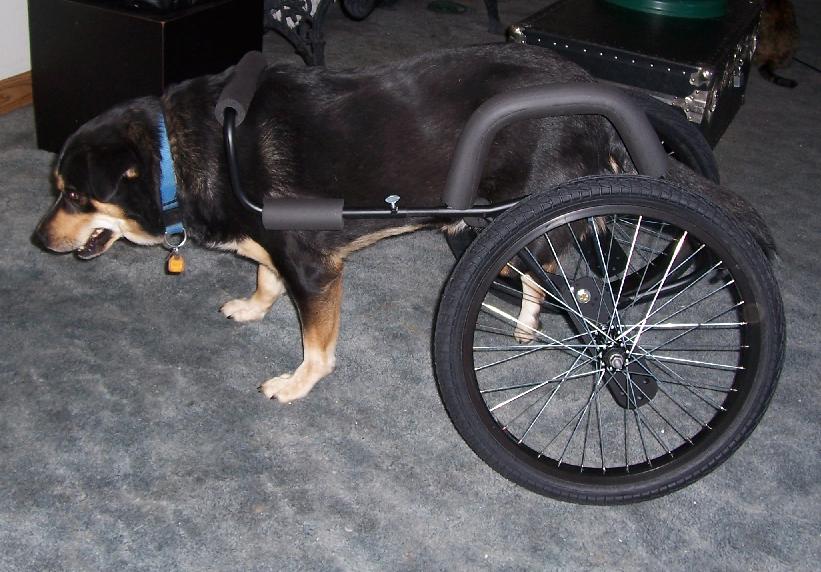By Michael Marsden
If your dog won’t stop biting, it can be much more than a frustrating habit. A biting dog can become a huge problem and a liability. If your dog is still a puppy, you know that part of a puppy’s nature is to nip during play. Although puppies may nip and bite gently during play, you must train him not to do so, to avoid potentially larger issues when the dog is full grown. A grown dog that has not been trained to stop biting will likely use its mouth during rough play and end up hurting someone.
So, how to you stop your dog from biting? There are different techniques that you can use to train your puppy to stop biting. You can also use these techniques on your adult dog. Here are five effective ways to stop a dog from biting.
1 – CommunicationCommunication is a key element in learning for dogs just as it is with humans. When it comes time to train your dog to stop biting, communicate to your dog in its own language. Dogs understand more tone of voice rather than the meaning of the words you say. When the dog bites during play, instead of using a shout or angry voice, try yelping. The yelping is understood as a painful response and will encourage your dog to refrain from biting.
When you communicate to your dog using the yelp, a high-pitched “ouch” will do the trick. When you use this technique, be sure to stop all play immediately and turn your back on the dog. Tone and body language are important to a dog. The dog will eventually come around to you and when he does, reprimand him in a firm tone with a command such as “bad dog” or “no bite” and he will quickly get the idea.
2 – Divert Attention
Another way to stop your dog from biting is to divert his attention from biting you to something that he can chew on, like a toy. By replacing your flesh with a chew toy each time the dog turns to inappropriate biting, he will get the idea that your limbs are not meant for biting. Remember to quickly provide the chew toy if your dog resorts to biting during play again to reinforce the habit.
3 – Positive ReinforcementA sneaky yet effective way of training your dog to stop biting is positive reinforcement. Positive reinforcement is a training technique that rewards good behavior with something positive. An example of positive reinforcement with a biting dog is to give him wonderful praise during play when he does not bite. The praise could be a pat on the head, a belly rub, a treat, or extra attention. Positive reinforcement is a great way to show your dog the type of behavior that you prefer.
4 – Tap the NoseIf your dog begins to bite or nip, quickly tell him to sit. Once he is seated, take your index finger, hold it in front of his nose, and then tap him on the nose as you say “bad dog” in a stern voice. Just remember, the tap itself is not the punishment, so it should not be particularly strong. It is just meant as a startling element to encourage him to stop the bad behavior. Don’t scream; just use a stern tone, which he will understand. Eventually, your dog will come to understand the raising of an index finger as an indication to stop a behavior.
5 – Avoid Biting and Nipping Games
A good way to stop a dog from biting is to avoid biting and nipping games in the first place. If you don’t encourage these types of games from the get-go, the dog will not be prone to biting and nipping at inopportune times. For example, a chasing game, while it may be exciting and provide plenty of exercise, will likely encourage your dog that you are prey. This is where his nipping and biting instincts will kick in.
Tug-of-War is a game that should also be avoided when playing with your dog. It will encourage him to think that humans are his equal and may promote biting as well. He won’t mean any harm with the biting, but he will want to win, so he will likely nip at your hands to make you lose grip on the toy. Replace Tug-of-War with fetch and retrieval games, and teach him the “drop and release” commands so that your authority is never questioned.
In ConclusionBiting during play can quickly evolve into a serious problem, which is why consistency is a key way to stop this from happening. It is important that you stop the biting behavior as soon as it starts, and discipline for the bad behavior while reinforcing the good. Remember, dogs do not understand the meaning of “sometimes” so be sure to consistently train the dog until he knows that biting is never allowed.
About the Author:
If you want to learn more about Dog Obedience Training then visit:
DogObedienceShortcuts.com – where you will learn about training specific dog breeds and curing common dog problems like getting your dog to stop biting.
Article Source:
ArticlesBase.com – 5 Ways to Stop a Dog Biting
